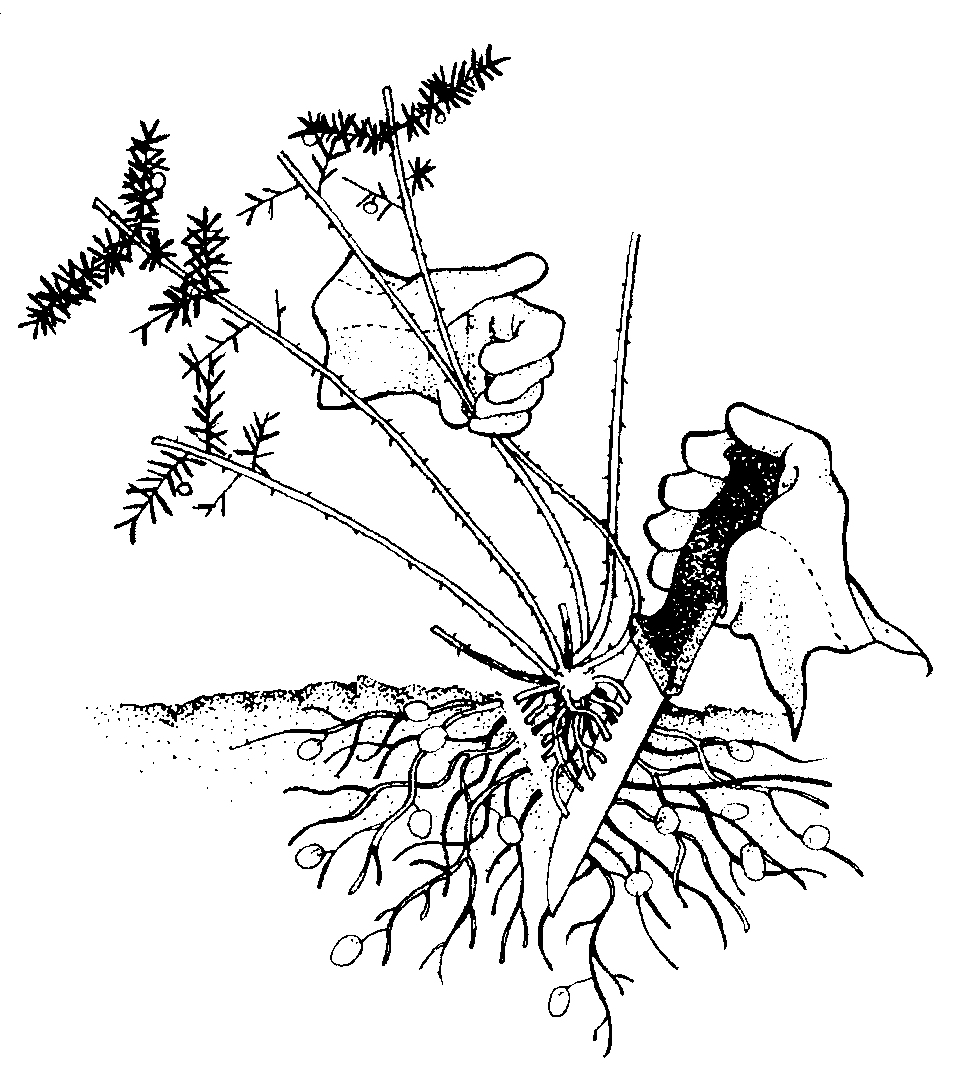Eragrostis curvula
Type of weed: Grass
Priority Weed Local Priority Weed. (See more weeds of the Local Priority Weed class.)
Description
African Lovegrass is a perennial grass that grows in clumps up to 1.2 m tall.
Stems are:
- slender
- erect
- sometimes bent at the nodes
Leaves are:
- Slender
- Erect
- Sometimes bent at the nodes
African lovegrass has a small, thin structure at the base of the leaf blade. This is a ligule. The ligule has a ring of white hairs.
Flowers are:
- grey or greyish-green when young
- straw-coloured when mature
- in groups of 4 to 13 on a spike
- 4–10 mm long
- 1–1.5 mm wide
- usually present in summer
- sometimes present year-round in coastal areas
Seeds are:
- about 1 mm long
- clustered at the end of the stems
- in groups 6–30 cm long
- present on the plant from mid-summer to autumn
Don’t confuse with…
African lovegrass looks like other perennial pasture tussock grasses. It is difficult to tell native and introduced Eragrostis species from each other. Other desirable tussock grasses such as Poa tussock (Poa labillardieri) also look similar.
Consol lovegrass (Eragrostis curvula cv. Consol) is a non-weed cultivar of African lovegrass. It is grown in pastures on sandy soils. The differences between this cultivar and the weed African lovegrass are subtle. It is difficult to tell them apart.
Dispersal
Seed spreads:
- short distances by wind
- between paddocks by livestock
- along roads by machinery and vehicles
- in hay and fodder
- by water
Impact on bushland
African Lovegrass prefers disturbed soils on roadsides, riverbanks and disturbed areas, from which it can invade adjacent degraded pastures and native grasslands. African Lovegrass is generally unpalatable, produces copious seed, and can rapidly spread over and dominate degraded pastures. It also competes with native species during regeneration after fire.
Alternative planting
Native plants
Council provides a tool, on its Mountain Landscapes website, to help you choose native alternative plantings. Choose your village, soil, vegetation community and the purpose of your planting, and the tool will give you suggestions.
There are native nurseries in several Blue Mountains villages, including Glenbrook, Lawson and Katoomba. Please also ask at your favourite local nursery.
Control
- Hand remove
- Crown
- Spray
Manual control
Hand remove
Grasp stem at ground level. Rock weed backwards and forwards to loosen roots, then pull out gently. Carefully tap the roots to dislodge attached soil. Replace disturbed soil and pat down.
Considerations
- Leave weeds so that roots do not make contact with soil; on a rock, for instance. A small amount of debris may be hung in a tree or removed from the site.
- Vary the position of your body to avoid fatigue when removing plants by hand over extended periods.
Crowning

Gently remove and bag seeds or fruit. Push a narrow trowel or knife into the ground next to the tap root. Carefully loosen soil. Repeat this step around the tap root. Grasp stem at ground level, rock plant backwards and forwards and pull gently. Softly tap the roots to dislodge soil. Replace disturbed soil and pat down lightly.
Chemical control
Note: Herbicides that may be used for this weed include Glyphosate.
Spraying
Please consult the Herbicide page of this website to help you decide whether to spray, how to do it safely and more.
Specific control tips for this weed
Successful weed control requires follow up after the initial efforts. This means looking for and removing new seedlings. Using a combination of control methods is usually more successful.
Hand weed at any time.
Can be spot sprayed with herbicide during the growing season. Only apply to green actively growing plants.
- control mature plants year round, with extra effort in spring before flowering
- look for flushes of seedlings after rain when temperatures are over 10°C (most seeds germinate in autumn and spring) and hand weed the seedlings before they are six weeks old
- keep looking for new plants each year as some seed remains viable for up to 17 years
For key points on these techniques:
Local Priority Weed
Control measures:
- The plant should be fully and continuously suppressed and destroyed.
- Plants under 4 metres in height should be fully and continuously suppressed and destroyed.
- The spread of this plant should be adequately contained to prevent spread impacting on priority assets. Weed notices will only be issued for these weeds under special circumstances.